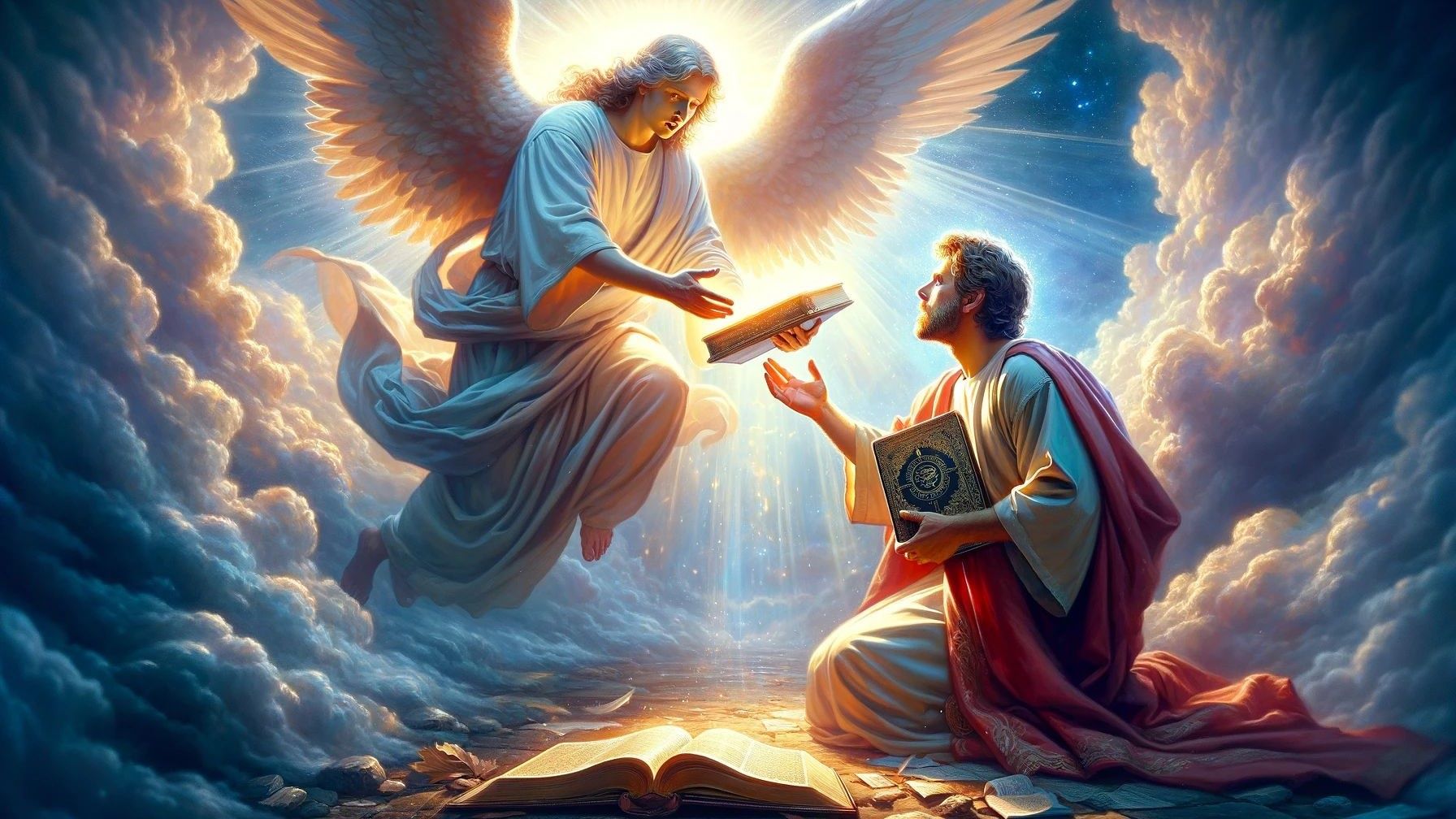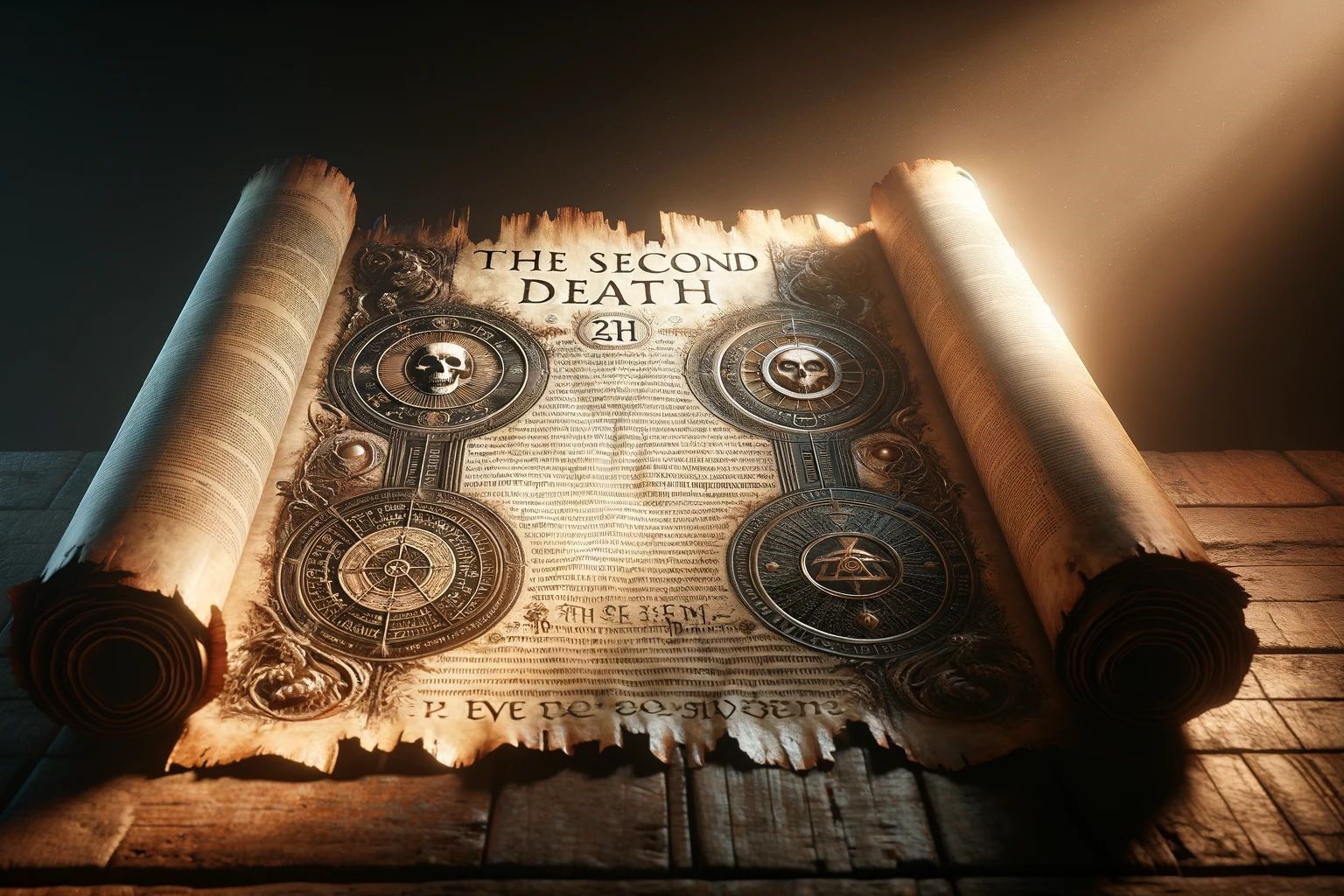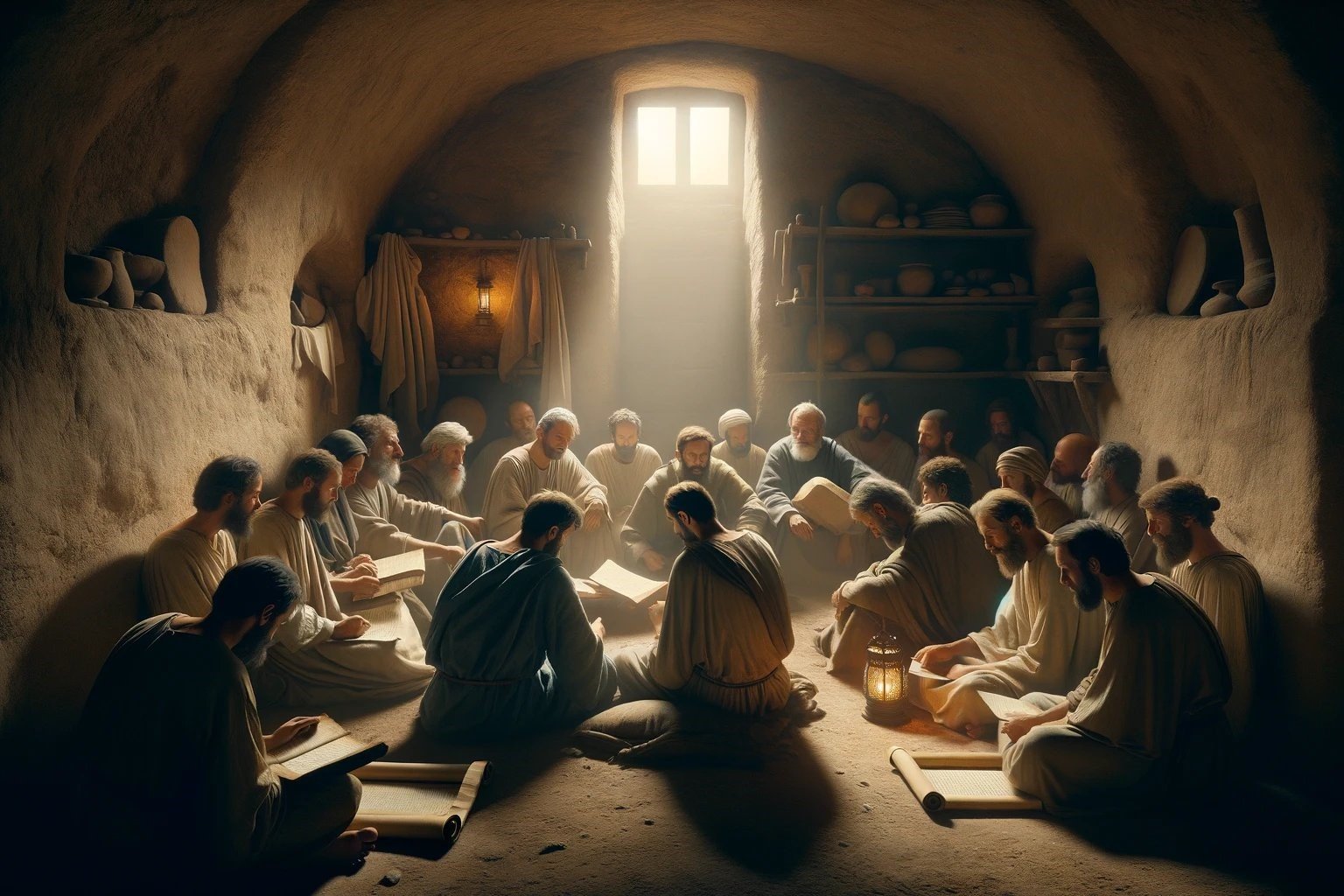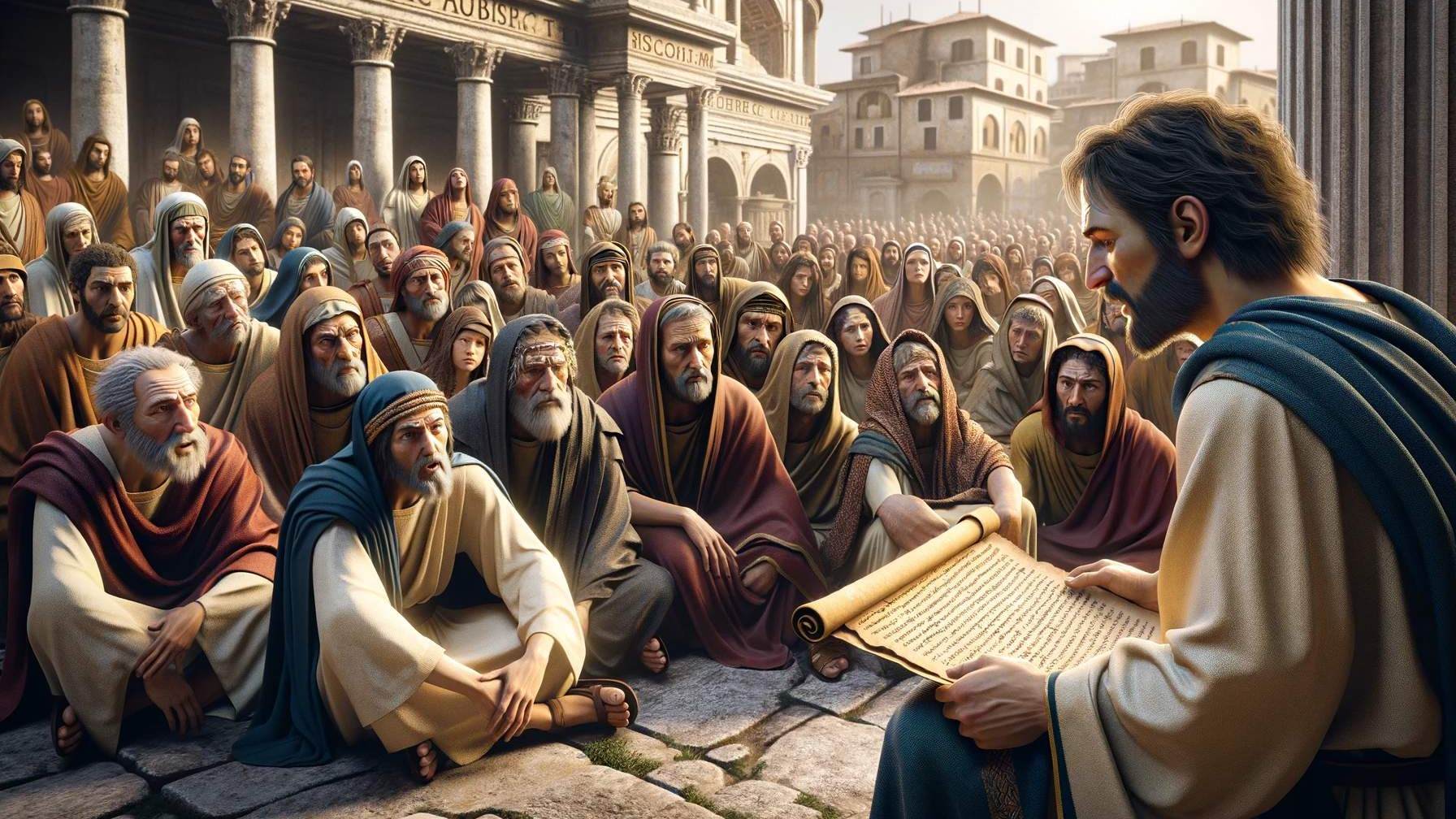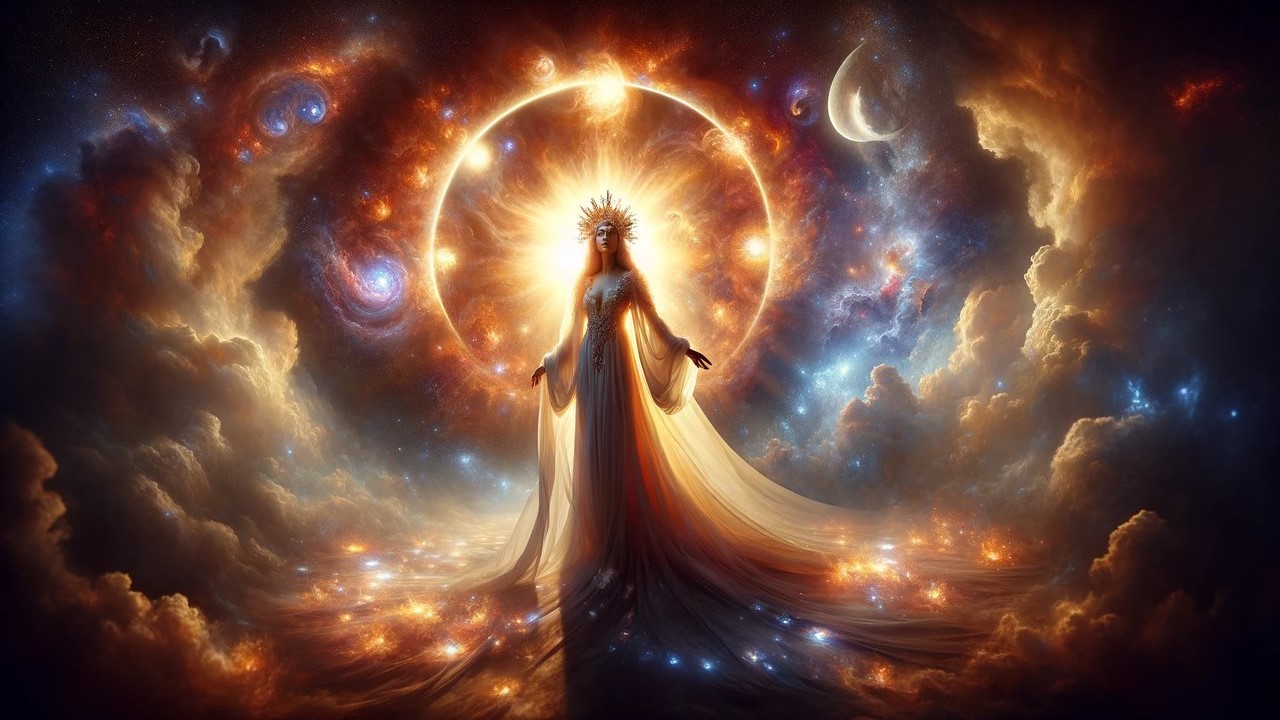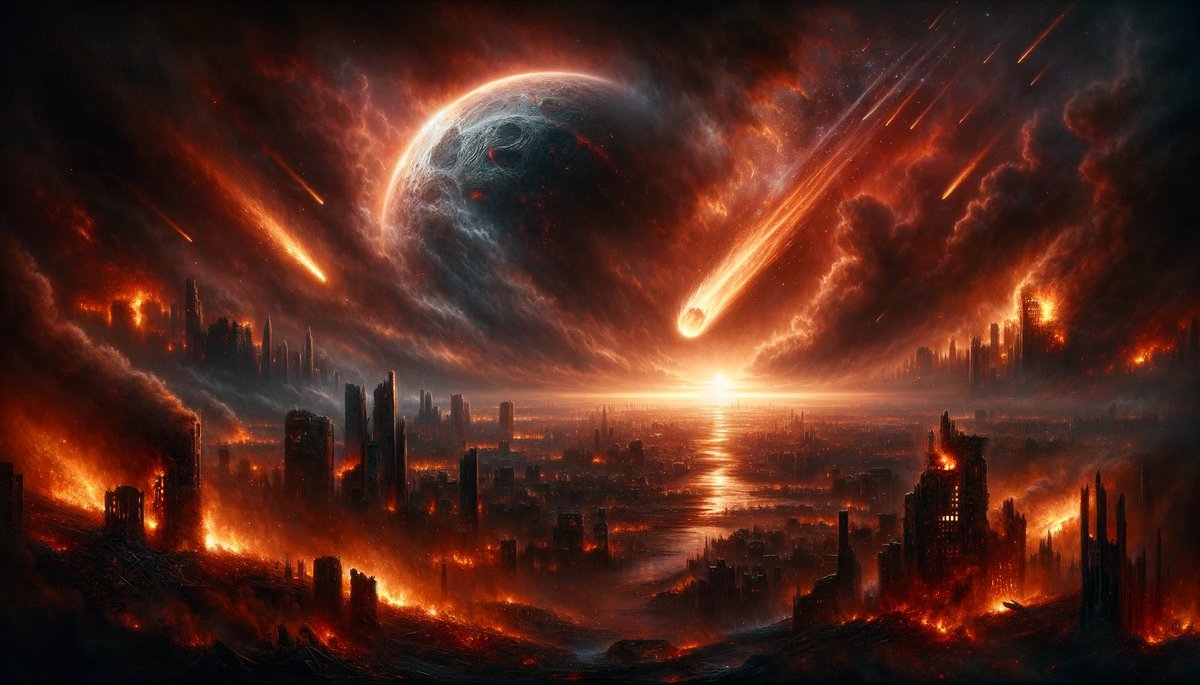Home>Bible Facts>What Color Are The Four Horses In The Book Of Revelation


Bible Facts
What Color Are The Four Horses In The Book Of Revelation
Published: February 11, 2024
Ericka Andersen, an editor at Christian.net, expertly merges digital strategy with content creation, focusing on faith and societal issues. Her communication skills enhance the platform's engaging narratives, fostering meaningful dialogue on belief's impact on society.
Discover the significance of the four horses in the Book of Revelation and their symbolic colors. Uncover fascinating Bible facts about the horses' meanings and implications.
(Many of the links in this article redirect to a specific reviewed product. Your purchase of these products through affiliate links helps to generate commission for Christian.net, at no extra cost. Learn more)
Introduction
The Book of Revelation, the final book of the Christian Bible, is a captivating and enigmatic text that has intrigued and inspired countless individuals throughout history. One of the most iconic and mysterious passages within this apocalyptic book is the vision of the Four Horsemen of the Apocalypse. These four horsemen are vividly described as riding different colored horses, each representing a distinct aspect of divine judgment and the tumultuous events preceding the end of the world.
In this article, we will delve into the intriguing question: What color are the four horses in the Book of Revelation? By exploring the symbolism and significance of the white, red, black, and pale horses, we will unravel the profound meanings behind these vivid images and gain a deeper understanding of their relevance within the context of biblical prophecy.
Join us on this illuminating journey as we uncover the symbolic significance of the colors of the Four Horsemen and unravel the profound messages embedded within this timeless biblical imagery.
The White Horse
The first of the Four Horsemen of the Apocalypse is depicted riding a white horse, a striking image that has captivated the imagination of readers and scholars for centuries. In the Book of Revelation, the rider of the white horse is described as holding a bow and given a crown, and he sets out to conquer. The symbolism of the white horse and its rider has sparked intense debate and speculation, with interpretations ranging from representations of conquest and victory to the spread of righteousness and divine judgment.
The color white holds profound significance in biblical symbolism, often representing purity, victory, and triumph. In the context of the white horse and its rider, the imagery evokes a sense of authority and conquest, signifying the powerful forces at play during the apocalyptic events foretold in the Book of Revelation. The rider's possession of a bow further emphasizes the theme of conquest and the wielding of authority, suggesting a potent and decisive force unleashed upon the world.
Interpretations of the white horse and its rider vary widely, reflecting the diverse perspectives and theological traditions within biblical scholarship. Some interpretations view the rider as a symbol of divine righteousness and the victorious advance of God's kingdom, while others perceive a more ominous connotation, associating the rider with deceptive powers and false ideologies that seek to deceive and subjugate humanity.
The imagery of the white horse and its rider serves as a powerful reminder of the complex and multifaceted nature of biblical symbolism, inviting readers to contemplate the profound spiritual truths embedded within these vivid and enigmatic visions. As we continue our exploration of the Four Horsemen of the Apocalypse, the symbolism of the white horse sets the stage for a compelling journey into the depths of biblical prophecy and the enduring relevance of its messages for contemporary readers.
The white horse and its rider stand as a potent symbol of conquest, authority, and the unfolding of divine judgment, inviting us to ponder the profound implications of these apocalyptic visions and their enduring significance within the broader tapestry of biblical prophecy.
The Red Horse
The second of the Four Horsemen of the Apocalypse is vividly portrayed riding a striking red horse, a symbol that evokes intense emotions and profound contemplation. In the Book of Revelation, the rider of the red horse is granted the power to take peace from the earth and to make people slay each other. The symbolism of the red horse and its rider carries deep significance, representing themes of conflict, bloodshed, and the upheaval of societal order.
The color red holds potent symbolism in biblical imagery, often signifying blood, warfare, and upheaval. In the context of the red horse and its rider, the imagery evokes a sense of turmoil and discord, foreshadowing the tumultuous events that will unfold during the apocalyptic period. The rider's authority to take peace from the earth and to incite conflict underscores the profound impact of his actions, signaling a time of unprecedented upheaval and strife.
Interpretations of the red horse and its rider offer compelling insights into the multifaceted nature of biblical prophecy. The imagery has been interpreted as representing the outbreak of war, social unrest, and the breakdown of established order, reflecting the profound consequences of human actions and the divine judgment that follows. The rider's power to make people slay each other serves as a stark reminder of the destructive potential inherent in human conflict and the far-reaching implications of such turmoil.
The symbolism of the red horse and its rider invites contemplation of the enduring themes of warfare, societal upheaval, and the consequences of human actions. As we delve into the profound imagery of the Four Horsemen of the Apocalypse, the red horse stands as a potent symbol of the upheaval and discord that will characterize the apocalyptic events, prompting readers to reflect on the timeless truths embedded within these vivid and enigmatic visions.
The red horse and its rider serve as a powerful reminder of the profound impact of human actions and the far-reaching consequences of conflict and discord. The imagery invites readers to engage with the enduring themes of divine judgment, societal upheaval, and the transformative power of biblical prophecy, offering a compelling lens through which to explore the complexities of human history and the enduring relevance of these timeless biblical visions.
The Black Horse
The imagery of the black horse and its rider in the Book of Revelation presents a compelling and enigmatic symbol that has captured the imagination of readers and scholars for centuries. Described as holding a pair of scales in his hand, the rider of the black horse is tasked with delivering a message about scarcity, economic imbalance, and the consequences of societal injustice. The symbolism of the black horse carries profound significance, evoking themes of famine, economic hardship, and the ethical implications of human conduct.
The color black holds potent symbolism in biblical imagery, often representing darkness, mourning, and the consequences of moral transgression. In the context of the black horse and its rider, the imagery conveys a sense of scarcity and economic disparity, signaling a period of hardship and ethical reckoning. The rider's possession of scales underscores the theme of economic imbalance and the ethical dimensions of societal conduct, highlighting the profound implications of human actions within the divine framework of judgment and justice.
Interpretations of the black horse and its rider offer compelling insights into the ethical dimensions of biblical prophecy. The imagery has been interpreted as a powerful allegory for economic injustice, scarcity, and the consequences of societal exploitation, reflecting the enduring relevance of these themes in the contemporary world. The rider's message about the cost of essential goods and the ethical implications of economic disparity serves as a poignant reminder of the far-reaching consequences of societal conduct and the imperative of ethical stewardship.
The symbolism of the black horse and its rider invites contemplation of the enduring themes of economic justice, ethical conduct, and the consequences of societal choices. As we delve into the profound imagery of the Four Horsemen of the Apocalypse, the black horse stands as a potent symbol of scarcity, economic imbalance, and the ethical dimensions of divine judgment, prompting readers to reflect on the timeless truths embedded within these vivid and enigmatic visions.
The black horse and its rider serve as a powerful reminder of the ethical dimensions of human conduct and the far-reaching consequences of societal injustice. The imagery invites readers to engage with the enduring themes of divine judgment, ethical stewardship, and the transformative power of biblical prophecy, offering a compelling lens through which to explore the complexities of human history and the enduring relevance of these timeless biblical visions.
The Pale Horse
The imagery of the pale horse and its rider in the Book of Revelation presents a haunting and enigmatic symbol that has captivated the imagination of readers and scholars for centuries. Described as Death, the rider of the pale horse is accompanied by Hades and given authority over a fourth of the earth to kill by sword, famine, plague, and by the wild beasts of the earth. The symbolism of the pale horse carries profound significance, evoking themes of mortality, pestilence, and the profound impact of death on humanity.
The color pale holds potent symbolism in biblical imagery, often representing sickness, decay, and the transitory nature of human existence. In the context of the pale horse and its rider, the imagery conveys a sense of mortality and the devastating consequences of pestilence and death. The rider's authority over a fourth of the earth to bring about death through various means underscores the profound impact of mortality and the far-reaching implications of human frailty within the divine framework of judgment and mortality.
Interpretations of the pale horse and its rider offer compelling insights into the profound realities of human mortality and the enduring significance of these themes in the contemporary world. The imagery has been interpreted as a powerful allegory for the universal nature of death, the devastating impact of pestilence and disease, and the inescapable reality of mortality that transcends human boundaries. The rider's authority to bring about death through sword, famine, plague, and wild beasts serves as a poignant reminder of the far-reaching consequences of mortality and the imperative of acknowledging the transitory nature of human existence.
The symbolism of the pale horse and its rider invites contemplation of the enduring themes of mortality, pestilence, and the profound impact of death on humanity. As we delve into the profound imagery of the Four Horsemen of the Apocalypse, the pale horse stands as a potent symbol of mortality, pestilence, and the inescapable realities of human frailty, prompting readers to reflect on the timeless truths embedded within these vivid and enigmatic visions.
The pale horse and its rider serve as a powerful reminder of the profound impact of mortality and the far-reaching consequences of pestilence and death. The imagery invites readers to engage with the enduring themes of human frailty, mortality, and the transformative power of biblical prophecy, offering a compelling lens through which to explore the complexities of human history and the enduring relevance of these timeless biblical visions.
Conclusion
The vivid imagery of the Four Horsemen of the Apocalypse, each riding a distinctively colored horse, serves as a powerful and enigmatic symbol within the Book of Revelation. From the conquering presence of the white horse to the tumultuous upheaval brought forth by the red horse, the imagery of these apocalyptic riders conveys profound themes of conquest, conflict, scarcity, and mortality. As we unravel the symbolic significance of the colors of the four horses, we are drawn into a rich tapestry of biblical prophecy that transcends time and resonates with enduring relevance.
The white horse, with its rider symbolizing conquest and authority, invites contemplation of the powerful forces at play during times of divine judgment. The red horse, evoking themes of conflict and upheaval, prompts reflection on the far-reaching consequences of human actions and the enduring impact of societal discord. The black horse, with its message of scarcity and economic imbalance, serves as a poignant reminder of the ethical dimensions of human conduct and the imperative of just stewardship. Finally, the pale horse, embodying mortality and pestilence, invites us to acknowledge the transitory nature of human existence and the profound impact of mortality on humanity.
As we contemplate the symbolic significance of these vivid images, we are reminded of the enduring relevance of biblical prophecy in illuminating timeless truths about the human experience. The imagery of the Four Horsemen of the Apocalypse transcends its historical context, offering profound insights into the complexities of human history, the ethical dimensions of societal conduct, and the inescapable realities of mortality. It serves as a compelling lens through which to explore the enduring themes of divine judgment, human frailty, and the transformative power of biblical prophecy.
In conclusion, the colors of the four horses in the Book of Revelation convey a rich tapestry of symbolism and meaning, inviting readers to engage with profound truths that resonate across time and culture. The enduring relevance of these vivid images serves as a testament to the timeless power of biblical prophecy in illuminating the complexities of the human experience and offering timeless wisdom for contemporary reflection. As we journey through the enigmatic visions of the Four Horsemen of the Apocalypse, we are invited to contemplate the enduring themes of conquest, conflict, scarcity, and mortality, and to glean timeless insights that continue to resonate with profound significance in the present day.


